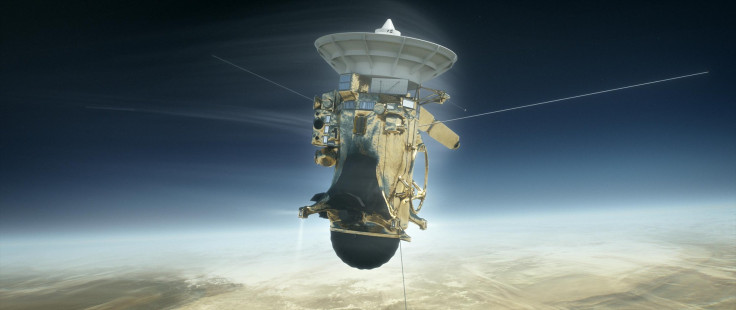NASA Recreates Cassini's Final Plunge Into Saturn With Last Data Transmissions

Cassini, NASA’s spacecraft which explored Saturn and its moons for around 13 years, made the final plunge into the planet's atmosphere on Sept. 15.
The shuttle transmitted information throughout its last few minutes above the planet, and the data that was live-streamed back to Earth helped scientists at NASA understand the conditions the spacecraft faced during its last moments.
According to a report released by NASA, the eight on-board instruments and plethora of engineering equipment on the spacecraft helped provide crucial data of Saturn’s atmosphere.
The data relayed back by Cassini is very varied and wide, but NASA engineers have isolated the final few seconds to get a very clear understanding of how the spacecraft behaved as it made its way into Saturn’s atmosphere.
Data from the attitude-control thrusters proved pivotal in plotting the conditions that were present during the descent. The thrusters are capable of producing a force of half a Newton, equivalent of the weight of a tennis ball on Earth, says the report. The team observed a fractional back-and-forth rocking of the spacecraft an hour before atmospheric entry. The thrusters were used to align the antenna toward Earth to keep a steady stream of data flowing.
The team at NASA also observed that during the final moments of its plunge through Saturn's atmosphere, Cassini was travelling through space that had the same density as the space where the International Space Station orbits around the Earth. But Saturn’s gravitational pull made Cassini travel about 4.5 times faster than ISS.
“The higher velocity greatly multiplied the force, or dynamic pressure, that the thin atmosphere exerted on Cassini. It's like the difference between holding your hand outside the window of a car moving at 15 mph versus one moving at 65 mph,” said the report.
Julie Webster, Cassini's spacecraft operations chief at NASA's Jet Propulsion Laboratory, Pasadena, California, said in the report that "to keep the antenna pointed at Earth, we used what's called 'bang-bang control.'" This was the name given to the thrusters' actions that kept the spacecraft aligned with Earth.
"We give the spacecraft a narrow range over which it can rotate, and when it bangs up against that limit in one direction, it fires a thruster to tip back the other way," she added in the report. The range of this movement was very small. Each thrust moved the spacecraft about two milliradians, which equals 0.1 degree.
Cassini approached Saturn with its 36-foot-long (11-meter) magnetometer boom pointing out from the spacecraft's side. As the spacecraft entered the 1,200 mile atmospheric barrier around the planet, it started experiencing a counter force. Gases from Saturn pushed the magnetometer boom and started turning it backwards. To keep the antenna aligned, the thrusters started firing more rapidly and at more regular intervals to keep the tilt in check.
At one point in the plunge, the spacecraft was firing the thrusters continuously to counter the heavy forces from Saturn's atmosphere. After a long-drawn out 91-second battle, the thrusters reached 100 percent capacity for about 20 seconds before all connection was lost. In the last eight seconds of transmission, Cassini’s boom was seen tipping slowly backwards. As the radio signal grew weaker, Cassini’s stream of data finally disappeared 83 minutes after its entry. This is the time it takes for the signal to reach Earth from Saturn.
"Given that Cassini wasn't designed to fly into a planetary atmosphere, it's remarkable that the spacecraft held on as long as it did, allowing its science instruments to send back data to the last second," said Earl Maize, Cassini project manager at JPL.
The Cassini-Huygens mission was a joint effort between NASA, ESA (European Space Agency) and the Italian Space Agency.
© Copyright IBTimes 2024. All rights reserved.




















